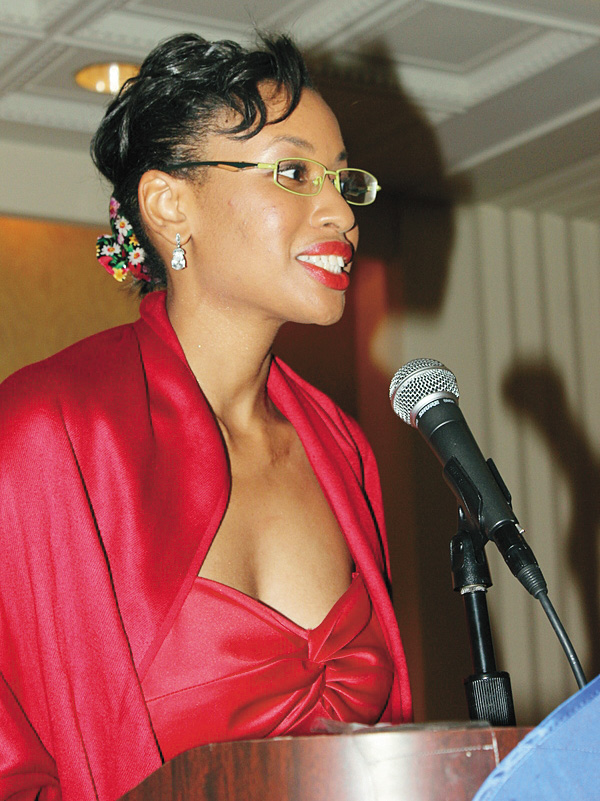
KEZIA ELLISON (Photo by Gail Manker)
The subject of sexual slave trade on the global level and intimate partner violence domestically were an important topic of discussion at the Mother-Daughter Circle “Sharing the Facts” Gathering & Luncheon, as medical professional struggled with how to protect women from HIV infection who sometimes don’t have control over their own bodies.
“Especially in the African-American community it’s not being promiscuous that’s leading to the infection. It’s a history of abuse,” said Kezia Ellison, president of Educating Teens about HIV/AIDs Inc. “The sad thing is with African-American women, we’re not being tested, not being diagnosed so we’re transitioning to AIDS.”
The event at the University of Pittsburgh University Club on March 9 was presented by Educating Teens as part of the organization’s Women and Girls Health Weekend. It coincided with National Women and Girls HIV/AIDS Awareness Day.
Although slavery has been abolished in most countries throughout the world, women are still traded as sex slaves in alarming numbers.
The United States government has been working to reduce the number of Americans forced into human trafficking through the Trafficking Victims Protection Act, which was reauthorized in 2008.
But what is being done in the United States to help women with almost equally less control over their bodies who find themselves in abusive relationships where a request to practice safe sex can come with a threat of domestic violence? While President Barack Obama reauthorized the Violence Against Women Act last week, 138 members of the House of Representatives voted against it.
According to the American Bar Association Black females experience intimate partner violence at a rate 35 percent higher than that of White females, and about 22 times the rate of women of other races.
“Young women are at particular risk for infection because their bodies are not as protected. Older women are also more susceptible,” Ellison said. “This is why we want to talk about how as women we’re more susceptible.”
In 2011, women and adolescent girls age 13 and older accounted for 21 percent of the estimated 49,273 new HIV diagnoses. The Center for Disease Control and Prevention estimated that 15 percent of women and girls did not know they were infected.
Last week a team of HIV experts reported the first case of a so-called “functional cure” in an HIV-infected infant. However, since access to healthcare it still an issue for many women, especially those in abusive relationships, health professionals believe it is more important to focus on HIV/AIDS awareness, outreach and prevention.
“As a person focused on prevention, I’m very hesitant to talk about a cure. Just because in that young child, the virus is undetectable, doesn’t mean there is a cure,” Ellison said. “When we hear these things we really have to understand what they mean for the rest of the population. We’re still seeing a lot of Black women dying because they don’t know their status.”
Decreasing new infections among women and girls can be difficult due to obstacles to health and safety that exist for those dealing with domestic violence. According to a study by the National Network to End Domestic Violence, women who were beaten or dominated by their partners were 48 percent more likely to become HIV infected than women in non-violent relationships.
“When you talk about domestic violence, we just saw our leaders argue about reinstating the violence against women act. This attack on women is a problem,” said Janice Gladden, former executive director if the Department of Human Services. “Now we have people trying to restrict access to birth control when it is sometimes an unwanted pregnancy that locks someone into an abusive relationship.”